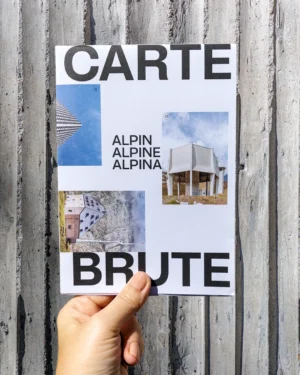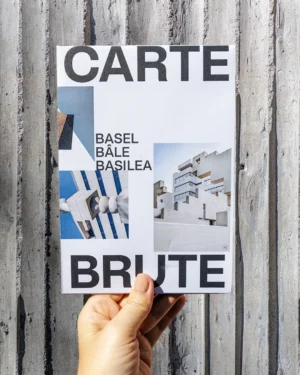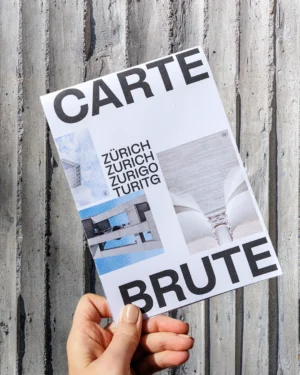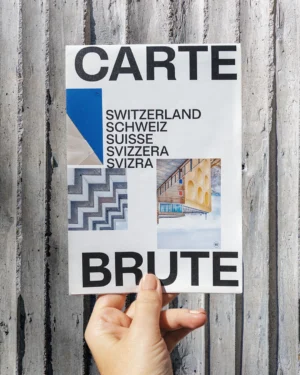5 Brutalism-inspired, contemporary art spaces to see in the Swiss mountains
If your heart beats for contemporary art, brutalism based architecture and nature, the Swiss mountains are your dream destination. Apart from breathtaking scenery, they boast a unique density of jaw-dropping concrete gems that blend art, architecture and cutting-edge technology. Here are my top five. Bon voyage!
THE WHITE TOWER (TOR ALVA)
Mulegns, Graubünden

© Karin Bürki/Heartbrut
Graubünden has a brand new cultural landmark. Unveiled in late May 2025, the White Tower illuminates the tiny mountain village of Mulegns, located along the historic Julier Pass route. With its delicate, sculptural elegance and intricately interwoven ornamentation, the tower resembles a giant sugar confection made of concrete.
You have never seen anything like it. It makes a great selfie-background and will wow a lot of tourists. But this is not statement architecture. On the contrary: The tower seeks to revive Mulegns (currently inhabited by 12 people) and pays tribute to the confectioners of Graubünden who left their homeland in poverty, returned wealthy and went on to invest their courage and craftsmanship in magnificent villas and churches. The tower’s bold looks, spectacular staging and fully digital fabrication process are a contemporary continuation of Graubünden’s pioneering spirit, rich baukultur and innovative engineering. This is, after all, the homeland of winter tourism, which has given us St. Moritz and spectacular train viaducts.
What would the confectioners build today? Nothing less than the ‘Eiffel Tower of Mulegns,’ as Federal Councillor Guy Parmelin aptly put it in his speech at the opening ceremony. The giant piece of alpine patisserie is indeed an architectural and technological marvel. The 30-metre-high tower is currently the world’s tallest 3D-printed concrete structure. It stands on a base structure and comprises four floors. Each is supported by eight filigree double and quadruple concrete columns, which were printed by robots. The domed hall serves as a viewing platform and stage for cultural performances and can accommodate up to 32 people. From here, visitors enjoy breathtaking views of the village and the majestic Val Surses valley.
The project was initiated by Giovanni Netzer, the head, heart and soul of the Origen Cultural Foundation, which has been reviving Mulegns and developed and implemented in collaboration with ETH Zurich’s Digital Building Technologies department, under the direction of Prof. Dr. Benjamin Dillenburger and Michael Hansmeyer.
The tower took four and a half years to complete. Total cost: CHF 4.5 million. However, even the most artistic patisserie is not permanent. After five years in Mulegns, the White Tower will be dismantled and rebuilt in a new location.

© Karin Bürki/Heartbrut
LA CONGIUNTA
Giornico, Ticino

© Karin Bürki/Heartbrut
Here’s an idea for a journey to one of Switzerland’s most radical and archaic art museums. It is dedicated to the Swiss sculptor Hans Josephsohn whose reliefs and half-figures have found the perfect match in Peter Märkli’s pared-down exposed-concrete shelter. The mini-museum is located in Giornico, a picturesque village in the Leventina valley in northern Ticino, midway between Bellinzona and Airolo. Access is an intimate and bare bones affair: simply pick up the key in the osteria next to the bus stop in the centre of Giornico.
Der Rohbeton-Monolith ist nicht zu übersehen. Im asketischen Innern reihen sich Josephsons Reliefs und Skulpturen aneinander und starren stoisch auf die Betonwände oder aufeinander. Es gibt viel Luft und Licht und sonst nicht. Wo hört die Skulptur auf und wo beginnt die Architektur? Märkli selbst bezeichnete sein Projekt als eine "radikale architektonische Meditation". Nimmt man dann noch die wildromantische Kulisse der Leventina dazu, kommt der Kopf im Handumdrehen zur Ruhe. Zen.

© Karin Bürki/Heartbrut
House to watch the sunset
Tarasp, Graubünden

© Karin Bürki/Heartbrut
The third iteration of ‘House to Watch the Sunset’, installed at the foot of Tarasp Castle in Switzerland in 2018, blends art and architecture within the Alpine landscape. Standing 13 metres high and spanning four floors with three staircases, Not Vital’s experiential structure in raw, locally sourced concrete provides a contemplative space from which to observe the setting sun (small caveat: a privilege solely reserved for the artist for security reasons). Conceived in just 13 minutes, the design reflects Vital’s intuitive approach, where sculptural form and architectural function merge seamlessly. Set against the alpine scenery and rich historical backdrop of the Engadine valley, the work invites reflection on time, place and perception.
‘House to Watch the Sunset’ is part of a series that began in Agadez, Niger, and Amazonas, Brazil. The Tarasp edition also interacts with the medieval castle itself, which was built around 1040 and acquired by Vital in 2016. The contemporary intervention builds upon the castle’s storied past, shaped by figures such as the industrialist Karl August Lingner, who restored it. It also highlights Vital’s ongoing artistic journey of fusing global narratives with local context.

© Karin Bürki/Heartbrut
SKYSPACE PIZ UTER
Zuoz, Graubünden

© Karin Bürki/Heartbrut
American artist James Turrell combines iconic architecture with natural and artificial light in unique landscapes. His best-known works include the Skyscapes series. These structures, which are open to the sky, allow viewers to contemplate the heavens. After sunset, the colour nuances of the environments change through computer-controlled artificial lighting. They start off subtle and become increasingly intense. Turrell began creating his signature Skyscapes in the 1970s. His oeuvre now comprises around 90 pieces on all continents. One of his sky observatories is located high above the Hotel Castell in Zuoz.
‘Science strives for answers, but art is happy with a good question’ is a famous Turrell quote. A question that could be raised by his Skyspace facing Piz Uter mountain could be: What colour is the sky? The answer is well worth the trip to Zuoz. The ‘Castell’ is considered an art hotspot. This is thanks to Ruedi Bechtler, an artist and engineer who bought the former spa hotel, built in 1913, with his wife in 1996. Bechtler has furnished the hotel with numerous artworks from his collection, including installations by Roman Signer, pieces by Fischli/Weiss, sculptures by Erwin Wurm, as well as the ‘Red Bar’, which was created by Pipilotti Rist. This art destination is set to attract even more enthusiasts in the future, as Swiss A-list gallerist Iwan and Manuela Wirth took over the Castell at the end of November 2024.

© Karin Bürki/Heartbrut
MUseum of Fine Arts CHUR
GR

© Karin Bürki/Heartbrut
The giant off-white cube in the centre of Chur adjoins Villa Planta, the splendidly ornamental 18th-century home to the original art museum. The 2016 extension acts as a contemporary take on the villa’s Palladian pomp – with all superfluous elements stringently stripped down. The facade’s characteristic inset relief panels comprise 4,600 square blocks of moulded concrete. The purist theme continues inside, where you can enjoy contemporary art exhibitions and, at afternoon-tea time, elderly ladies in shocking pink. Outside, a reclining brass figure by Hans Josephson and a HR Giger alien break up the stark geometry. The minimalist cube by Barcelona-based practice Barozzi/Veiga won the RIBA Award for International Excellence 2018.

© Karin Bürki/Heartbrut



